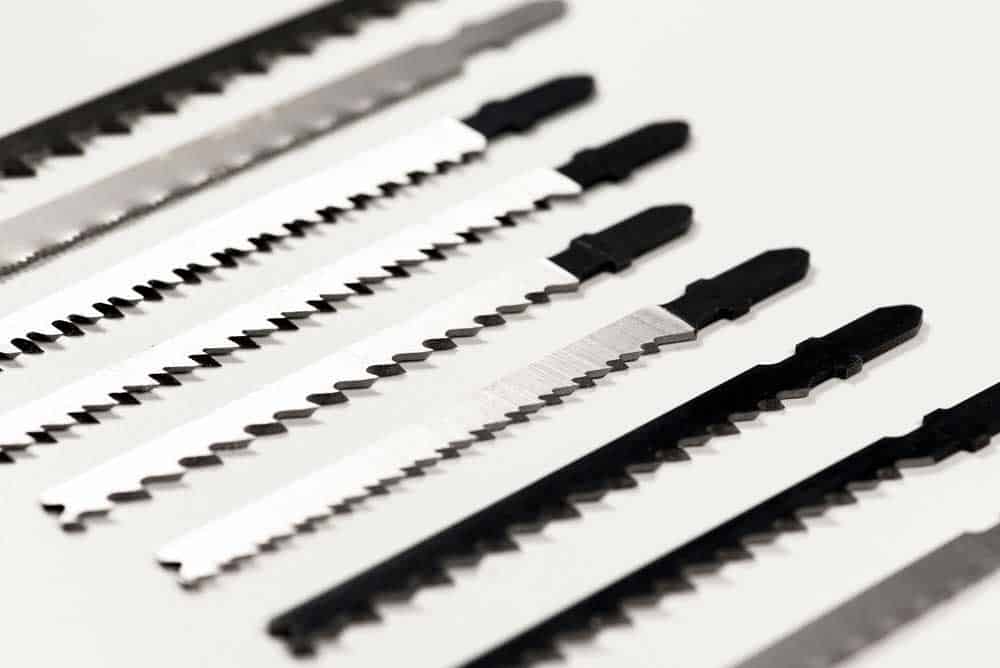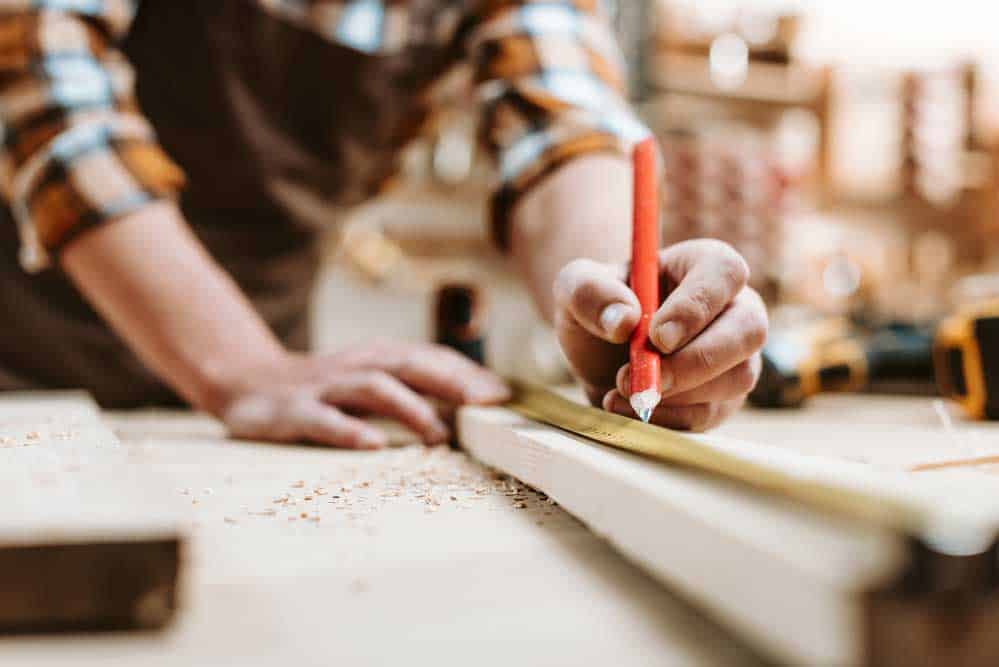What kind of jigsaw blade for smooth wood cutting should I use? As you know, there are so many blades on the market that are used for a range of different materials.
So, it makes sense to say that the blade you use affects the material, in this case, wood.
No matter what you’re doing with that piece of wood, you want it to be smooth without splinters.
Let’s look at some of the things to think about when choosing the right jigsaw blade.
What Do You Need to Consider When Selecting a Blade Type?
When you have a jigsaw machine, you assume it can cut through everything and anything.
However, selecting a blade type is a thorough process and requires a lot of thinking and consideration.
The easiest way to know if a blade is right for you is to look at the icon on the brand label.
Brands such as Bosch often have cool little icons that tell you what material it can cut and what kind of cut it will give you.
Reading the labels of the blades also gives you other information, such as the blade’s material, how many teeth it has, and more that helps you in your search.
Also, some blades have a code, which is another way that tells you about the nature of the blade.
Just like a special band saw blade made specially to cut wood, you get some jigsaw blades specially made to cut wood.
Ask someone in the store to point out these blades to you.
Before buying your jigsaw blade, you should also have a mental note of your machine model and other things, such as if it can change its blade.
This is important because if it cannot change blades, you probably bought another one for nothing!

(jigsaw on a wooden board)
Things You Need to Think About Before Choosing the Right Jigsaw Blade
Whether cutting MDF wood, plywood, dry wood, or anything else, you need the correct blade.
A blade not made for wood can ruin it, cause splintering and even damage the whole project.
Now, this is something you don’t want! So, let’s get on and see the things you must think about before buying a new blade.
Type of shank
The shank of the blade is an essential part of choosing a blade.
The shank of the blade fits into the jigsaw’s clamp and determines if you can change your blade.
You get two types of blades, a U-shank and a T-shank.
The T-shank style is the most popular and widely used of the two, and many jigsaws that have U-shank blades also accept T-shank blades.
The T-shank blades came around because they give you a faster blade-changing system and newer jigsaws come with this style now.
If you want to check your jigsaw to see what style it has, look at it from the front. The teeth of the blade should be facing toward you.
Now look at the top of the blade, where you would see some point that secures the blade to the jigsaw. A screw is the U-shank, and the clamp is T-shank.

(jigsaw blades)
Choose the right number of teeth.
You have to get the right teeth per inch (TPI) for the thickness of the material you want to cut.
If you do not have the right TPI, your blade will get dull quickly, and your wood piece will be ruined. And we don’t want that!
Choosing the right TPI is arguably the most important thing to consider when buying a blade for your jigsaw.
So, when you want to cut wood, you should go for a 6 to 10-TPI blade. The wider gullets (spaces between the teeth) help to clear the sawdust, and cuts your wood perfectly, just how you want it.
Different materials
Jigsaw blades are made of different types of materials. This is so it can cut through different things, such as wood, metal, and steel.
Some blade materials may not handle the durability of wood, while others are best suited for it.
The best blade material is high-carbon steel blades because they are flexible and softer than other materials.
They cut through the wood easily and can usually be used on the fast setting on the jigsaw.
However, since they are so flexible, it is prone to breaking and getting dull. Luckily, you can buy the blades in bulk since they are cheap.
Then you can also consider bi-metal blades. These blades are pretty cool, made from carbon steel, but the teeth are made from high-speed steel.
This awesome combination allows you to benefit from durability and flexibility. If you want to cut hardwoods, bi-metal blades should be your choice.
If you have a stubborn piece of wood that isn’t budging, you can also get a high-speed steel blade.
This blade is hard but not flexible, making it perfect for harder types of wood.

(measuring wood to cut)
The direction of cut
The direction of the cut just depends on what you want to cut. When you want to cut wood, the blades are usually designed so the teeth cut on the upstroke.
If you want to cut a delicate piece of wood and ensure you have no chipping, you should get a downstroke-cutting blade.
You can also just put masking tape on the cutting line path before you draw on the pattern line and cut as normal.
Remember, you have to have a sharp blade, and do not force the blade through the wood because you will damage it!

(a man using a jigsaw)
Conclusion
With this information in the article, you can get the best jigsaw blade for smooth wood cutting.
Always read the labels and ensure the blade is compatible with your jigsaw so you don’t waste money!
